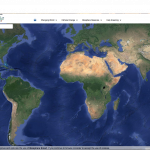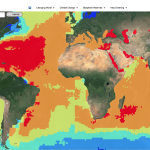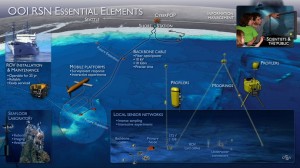
2016 marks a new record low for the Arctic sea ice wintertime extent. Frozen seawater at the top of the Arctic Ocean melts during the spring and summer and reforms during the fall and winter. Sometime between February and April, the frozen seawater reaches its maximum yearly extent. In 2016, that happened on March 24. However, this year’s maximum extent is the lowest it has ever been (5.607 million square miles). There was a slight decrease from 2015’s maximum extent (5.612 million square miles), which was the record low. Over the past 3.5 decades, about 620,000 square miles of frozen seawater have been lost.
There are a few reasons for this continued record lowering of the maximum extents. One has to do with wind patterns – January and February’s wind patterns consisted of bringing warm air from the south to the Arctic, making ice cover expansion difficult. Another reason for this record low is that the ocean is also growing warmer, which is not allowing the ice to extend as far as it used to.
This pattern is of great concern because the Arctic is essential in regulating the Earth’s temperature. Its surface reflects the sun (solar energy) instead of the ocean absorbing it. The loss of sea ice causes more areas to be open water, which will cause more heat to be put into the atmosphere. A climate scientist at Rutgers University, Jennifer Francis, said “ […] As winter sea ice disappears, areas of unusually warm air temperatures in the Arctic will expand. These are also areas of increased evaporation, and the resulting water vapor will contribute to increased cloudiness, which in winter, further warms the surface.”
The implications of this phenomenon are clear and dangerous.
Source:
https://www.sciencedaily.com/releases/2016/03/160328195126.htm
Science Daily is a great way to stay up to date on current research regarding a number of interesting topics. I’d encourage you all to check it out when you have the time!










